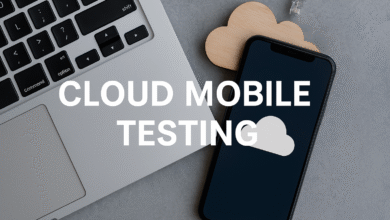Effective Ways to Track AI-Powered Search Traffic in Google

The concept of artificial intelligence is transforming the online searching behavior of people. AI-based search is changing the flow of traffic to websites, whether through conversational inquiries in Google Search Generative Experience (SGE) or through voice assistants, and personalized suggestions.
This is a new wave of search traffic that should be known to businesses, marketers, and SEO experts. The old analytics approaches are just not sufficient anymore- you require strategies that are specific to the AI-driven search behavior.
In this article, we are going to discuss the best strategies to monitor AI-based search traffic in Google, its importance, and how you can change your analytics model to keep up.
Why Tracking AI-Powered Search Traffic Matters
AI-driven search changes how users interact with search engines. Instead of typing short keywords, people ask natural, complex questions. Google then delivers contextual answers, often blending traditional links with AI-generated summaries. This shift means:
- Traffic sources are more diverse: You may no longer have a single keyword ranking; conversational prompts or snippets may bring you visibility.
- Clicks are more selective: The user might use the AI-produced answers and ignore the standard results.
- User intent is clearer: AI search has a preference towards questions with context, which provides you with a more comprehensive understanding of what audiences are actually after.
Lack of tracking of such traffic may mean lost content optimization, lead generation, and competitive positioning opportunities.
1. Google Search Console with a Focus on AI Queries
Google Search Console (GSC) is still the base of search visibility tracking. Nevertheless, long-tail, question-based, and conversational queries require your attention when examining AI-driven traffic.
Search questions that begin with how, what, or why, as these are the typical queries that AI-based search responses are activated with. Separate segmentation of these queries will assist you in knowing the proportion of the traffic that was driven by AI-influenced search and the conventional keyword search.
Additionally, monitor impressions that don’t always result in clicks. A surge in impressions with steady or declining clicks may indicate that users are engaging with AI summaries instead of clicking through.
2. Use Analytics Segmentation
The AI-driven search is based on voice search and conversational search. With products such as Google Analytics 4 (GA4), you can add user segments that include users who arrive at your site with long-tail or natural language queries. For instance:
- Filter on query length of 5 words or greater.
- Types of track devices: Mobile and smart assistants usually take over voice-based searches.
- Indicate the metrics of engagement of these segments, including time on page and bounce rate.
This categorization gives a clearer image of the actions of the AI-driven queries in contrast to the usual keyword searches.
4. Track Search Generative Experience (SGE) Insights
The Search Generative Experience by Google is being implemented slowly, although signs of its impact on information search by users are encouraging. Until GSC offers explicit tracking of the results of SGE, indirect means can be used:
- Be aware of long-tail spikes.
- Compare the rates of engagement on informational material.
- Compare the rates of click-through prior to and after the launch of SGE in your area.
This active surveillance will keep you on the right side of AI-generated outcomes going mainstream.
5. Incorporate AI-Powered SEO Tools
The other useful method of tracking AI-influenced search traffic is through the use of AI SEO tools, which are aimed at identifying patterns that go beyond the classic ranking of keywords.
These applications usually combine natural language processing (NLP) to process conversational queries, semantic clusters, and topical authority. They also offer foresight into the possibility of the evolution of AI-driven search and allow you to adjust content strategies to it.
- Track Branded Search and Entity Mentions
The responses created by AI usually mention a brand, product, or thought leader directly. Monitoring branded searches, along with mentions of your entities in search engines, is a hint at how you will appear in the AI-driven search results.
You may also set up notifications in Google Alerts, Brand24, or Mention to track when your brand is mentioned in the answers of AI. Compare this with traffic surges in GA4 to find indirect benefits of AI-driven search visibility.
7. Measure Behavioral Metrics Closely
Search through AI might not necessarily attract huge traffic, but the traffic that will be attracted is usually better qualified. Behavioral measures like:
- Average session duration
- Pages per session
- Goal completion rates
- Conversion paths
Assist in verifying that the high-intent users are being driven by AI-powered queries. Even with fewer clicks, a search made by AI can produce more valuable leads in most instances, provided you are reaching the right audience.
Conclusion
To monitor the AI-based search traffic in Google, it is impossible to rely only on clicks. It includes examining chat queries, following featured snippets, gauging AI-based impressions, and using sophisticated analytics. Businesses may use a combination of the native tools offered by Google and AI-driven SEO data to shift their business model to succeed in the changing search ecosystem.
The key solution? The use of AI search can minimize conventional traffic, but it provides better-quality and intentional visitors. Individuals who would learn to monitor and capitalize on this new paradigm would have a competitive advantage in visibility, engagement, and conversions.



